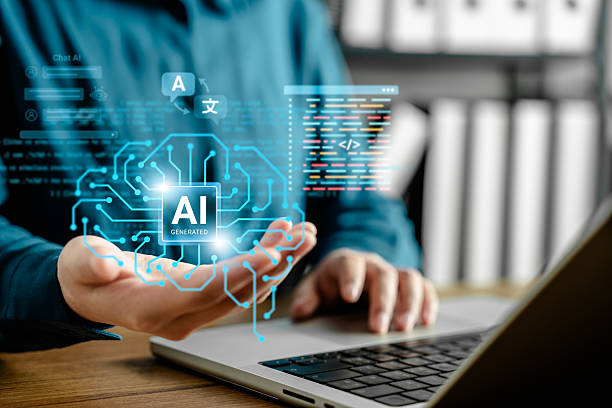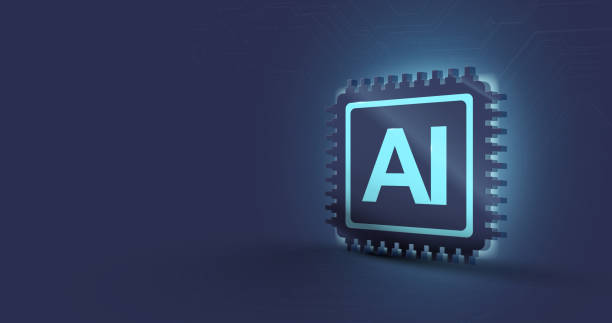AI Robots: Pioneers of the Future

#AIRobots and #ArtificialIntelligence; two words that shape the future of humanity.
In recent decades, we have witnessed remarkable advancements in the field of Artificial Intelligence, leading to the emergence of AI robots with extraordinary capabilities.
These complex systems, capable of learning, reasoning, and decision-making, are no longer just a part of science fiction films, but have increasingly permeated various aspects of our lives.
From factory production lines to personal assistants in homes, the presence of these smart machines has become a reality.
The nature of an AI robot goes beyond a simple machine; they refer to a system that can perform tasks typically requiring human intelligence, such as language comprehension, pattern recognition, and complex problem-solving.
This massive transformation has opened up unprecedented opportunities for improving the quality of life and increasing efficiency across various industries.
In this article, we will comprehensively explore this technological phenomenon, from its foundations to its applications and challenges.
Our goal is to provide an explanatory and educational perspective on this emerging field, demonstrating how an AI robot can shape our future.
This technological phenomenon is rapidly growing and evolving, and every day we witness the introduction of a new generation of AI robots that are pushing the boundaries of machine capabilities.
Understanding how these systems work and their impact is essential for anyone interested in the future of technology.
How much does losing business leads due to an unprofessional website cost you? Solve this problem permanently with professional corporate website design by Rasaweb!
✅ Increase credibility and trust of potential customers
✅ Easier attraction of new business leads
⚡ Get a free consultation now!
The Inner Workings of Smart Robots
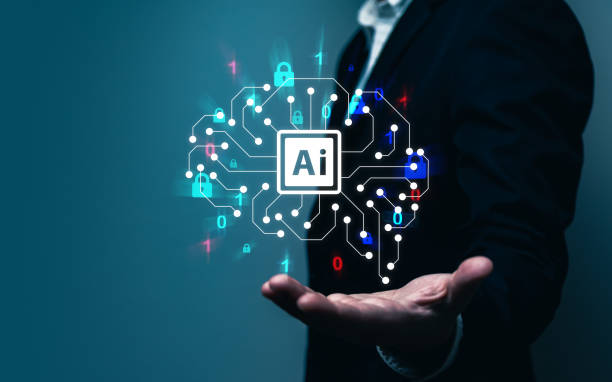
#NaturalLanguageProcessing, #MachineLearning, and #ComputerVision are the main pillars of an AI robot‘s mechanism.
These robots rely on a set of advanced technologies to perform their tasks.
Machine Learning, especially Deep Learning, enables an AI robot to learn from data and improve its performance without explicit programming.
For example, a robot can recognize specific objects by observing thousands of images or understand human tone and intent by analyzing conversations.
Natural Language Processing (NLP) gives robots the ability to interact naturally with humans, understand commands, and even generate meaningful responses.
Computer Vision also allows smart systems to “see” their surroundings through cameras and sensors and identify objects, people, and obstacles.
Sensors (such as lidar, radar, touch sensors) collect environmental information, and actuators (such as motors, robotic arms) are responsible for the physical execution of commands.
These components work together to enable movement, perception, and interaction for an AI robot.
Understanding these specialized mechanisms shows how these machines can perform complex tasks autonomously and become highly efficient entities that surpass human capabilities in many areas.
These capabilities allow an AI robot to perform well even in dynamic and unknown environments.
Types of AI Robots and Their Amazing Applications
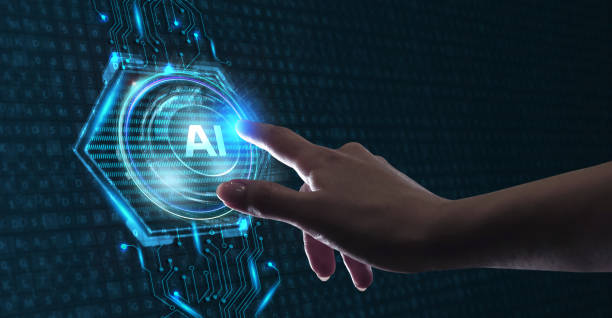
#IndustrialRobots, #ServiceRobots, and #MedicalRobots are just a part of the broad classification of AI robots that are used in today’s world.
These systems have brought about significant changes across a wide range of industries and sectors.
Industrial robots, like those seen on automotive assembly lines, are designed to perform repetitive, precise, and heavy tasks at high speeds, leading to a significant increase in productivity and a reduction in human errors.
Service robots, from smart home vacuum cleaners to delivery robots in warehouses, make daily life and logistical operations easier.
In the medical field, surgical robots like Da Vinci have brought surgical precision to a level that minimizes risks for the patient and assists doctors in performing very delicate tasks.
Furthermore, smart robots are being developed for elder care or assisting individuals with disabilities.
Exploration robots gather vital information in hazardous or inaccessible environments such as space, ocean depths, and chemically contaminated areas, playing a crucial role in scientific research.
This variety of applications demonstrates how an AI robot can be effective in solving various human challenges and push the boundaries of our capabilities.
This expansion in types and applications creates vast opportunities for news and guidance to introduce new capabilities of this technology.
| Type of AI Robot | Main Applications |
|---|---|
| Industrial (Industrial AI Robots) | Assembly, welding, painting, material handling, quality inspection |
| Service (Service AI Robots) | Housekeeping (smart vacuum cleaner), goods delivery, hospitality, educational robots |
| Medical & Health (Medical & Health AI Robots) | Remote surgery, rehabilitation, nursing assistant, disease diagnosis |
| Exploration (Exploration AI Robots) | Space, deep sea, contaminated areas, mapping |
| Military & Security (Military & Security AI Robots) | Reconnaissance drones, bomb disposal, border surveillance |
Significant Benefits of Smart Robots and Social Impacts
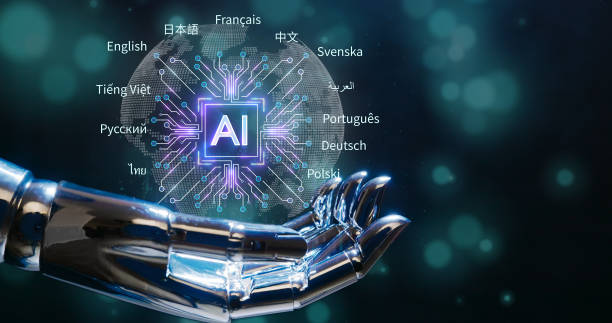
#IncreasedProductivity, #ReducedError, and improved #QualityOfLife are among the most important benefits that AI robots have brought.
These advanced machines can perform tasks with unparalleled speed, accuracy, and consistency, which directly leads to increased productivity in various industries.
In factories, an AI robot can carry out production operations tirelessly and with near-zero error, drastically reducing costs.
Furthermore, robots can be employed in hazardous environments and for tasks that are high-risk for humans; from handling toxic chemicals to conducting search and rescue operations in disaster-stricken areas.
This capability significantly helps preserve human lives and health.
From a social perspective, smart systems have created new job opportunities in the fields of designing, programming, and maintaining these systems.
Also, by automating repetitive and tedious tasks, these robots allow humans to focus on more creative, strategic, and human-interaction-requiring tasks.
In the healthcare sector, smart robots can aid in early disease diagnosis, assist in surgeries, and provide personalized care, which leads to an improvement in public health.
An analysis of these benefits shows how an AI robot can play a pivotal role in economic and social progress and improve life in various dimensions.
These intelligent tools not only increase efficiency but also help redefine the way we work and live.
Does your current e-commerce website convert visitors into customers or drive them away due to its old appearance or slow speed? The expert team at Rasaweb solves these problems permanently with professional e-commerce website design!
✅ Increase customer trust and your brand’s credibility
✅ Stunning speed and excellent user experience
Get a free consultation with Rasaweb now ⚡
Challenges and Limitations Facing AI Robots
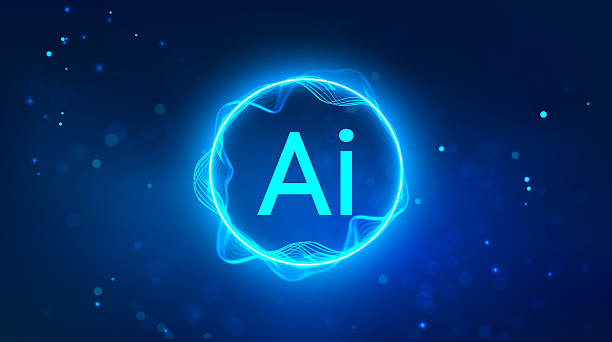
Despite numerous advantages, #AIEthics, #DataSecurity, and #TechnicalLimitations are among the fundamental challenges that the development and adoption of AI robots face.
One of the biggest concerns is ethical and social issues; including the impact on the job market and the potential for human labor replacement.
Concerns exist about whether smart systems could lead to increased inequality.
Moreover, the issue of data security and user privacy for those interacting with robots is of high importance, as these robots collect and process vast amounts of personal and sensitive information.
Technical limitations also persist; although an AI robot is highly skilled at specific tasks, they lack general intelligence and intuitive human reasoning abilities.
They cannot be creative or make complex ethical decisions that require a deep understanding of human context and values.
The high costs of research, development, and implementation of these technologies can also be a barrier to their widespread adoption.
Furthermore, ensuring the transparency and explainability of decisions made by an AI robot is a significant technical and philosophical challenge.
This section of the article raises thought-provoking content about the future of this technology and emphasizes that sustainable development of these robots can only be hoped for by considering and managing these challenges.
Awareness of these limitations is essential for anyone working in this field.
AI Robots: A New Companion in Everyday Life
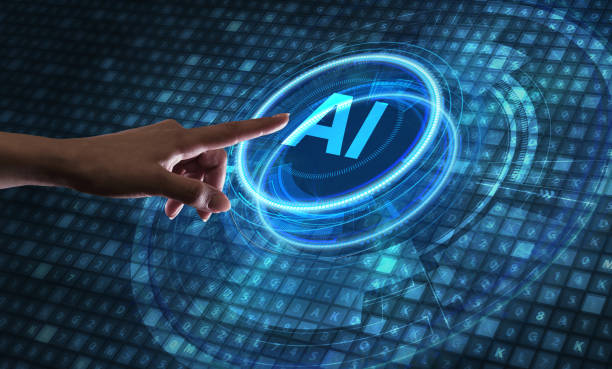
AI robots are not limited to factories and hospitals; they are increasingly integrated into our daily lives as #HomeAssistants, #SocialRobots, and tools for #HumanRobotInteraction.
From robotic vacuum cleaners that clean our homes to smart voice assistants like Siri and Alexa that provide information and perform simple tasks with voice commands, the presence of smart systems in our homes has become commonplace.
Beyond this, companion robots like Paro in Japan are designed to provide emotional support to the elderly and patients.
These robots, by reacting to touch and sound, create an interaction similar to a pet or friend, which can help reduce loneliness and increase well-being.
Furthermore, educational robots for children are being developed that can teach scientific and educational concepts through interactive and entertaining methods.
These robots are designed not only to convey information but also to establish emotional and cognitive connections with their users.
The potential of an AI robot as a companion, assistant, or teacher at home creates new perspectives for the future of smart living.
This area is particularly engaging because robots, with creative designs and attractive capabilities, can offer a delightful user experience and become an inseparable part of families.
Interacting with an AI robot is no longer a dream, but a part of modern life’s reality.
The Future of AI Robots: Ethical Considerations and New Horizons
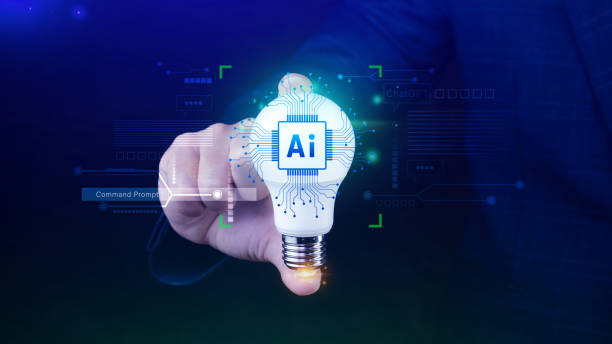
The future of #ArtificialGeneralIntelligence, #CognitiveRobotics, and #AIRegulations, alongside AI robots, presents exciting but complex prospects.
One of the most important discussions is the development of Artificial General Intelligence (AGI), which enables robots to perform like humans in any intellectual task.
This advancement can bring about immense revolutions in all aspects of human life, but at the same time, it poses deep ethical and philosophical challenges.
Will an AI robot have consciousness? What will their rights be? International regulations and laws are essential for managing and controlling these technologies to prevent misuse or unintended consequences.
Furthermore, the concept of cognitive robotics, which allows robots to understand more deeply and learn from experience, opens new horizons for human-robot interactions.
We will witness the emergence of robots that can automatically solve the most complex problems and even design and build other robots.
These developments require an analytical approach, as well as thought-provoking content regarding accountability, governance, and coexistence with these intelligent beings.
Human society must be prepared to address these issues and establish a framework for a future in which AI robots play a central role.
This section explores these new horizons and the necessity of addressing ethical and regulatory aspects to ensure the development of these technologies benefits humanity.
| Topic | Ethical/Future Considerations |
|---|---|
| Security and Control | How to prevent hacking and malicious use of robots? |
| Accountability | Who is responsible if a robot causes an error or harm? |
| Social Interactions | The impact of social robots on human relationships and child development. |
| Privacy | Protecting privacy against extensive data collection by robots. |
| Discrimination and Bias | How to prevent biases present in training data from affecting robot performance. |
| Employment and Economy | Managing the impact of automation on the job market and creating new jobs. |
The Indispensable Role of Smart Robots in Industry and Manufacturing
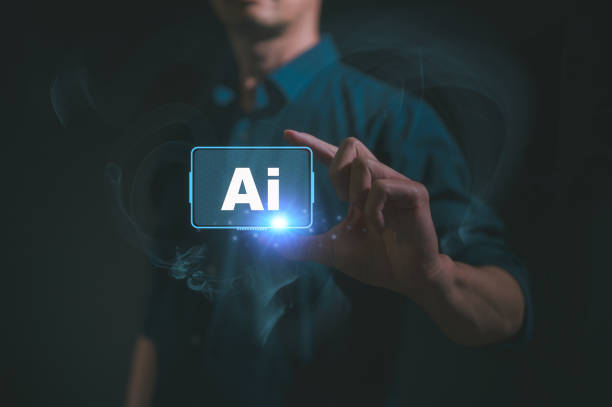
#Industry4.0, #AdvancedAutomation, and #CollaborativeRobots are concepts intertwined with the emergence and development of AI robots in the industrial sector.
These robots are no longer just fixed, programmed machines; rather, they are intelligent systems that can adapt to their environment, learn from data, and even collaborate with human workers.
In modern production lines, AI robots are employed in operations such as complex assembly, spot welding, painting, and quality inspection.
Their ability to perform repetitive tasks with extraordinary precision and high speed has revolutionized manufacturing.
The concept of «collaborative robots» or «cobots» has also gained special importance.
These robots are designed to work alongside humans in shared spaces without posing a risk.
A cobot can take on heavy or dangerous physical tasks, while humans focus on more complex tasks requiring judgment.
In addition to manufacturing, smart robots have been transformative in logistics and warehousing.
From autonomous robots that move packages in warehouses to intelligent systems for inventory management and supply chain optimization.
These applications demonstrate how an AI robot can improve efficiency at all stages of an industrial process.
This specialized field not only leads to increased profitability but has also created new standards and expectations in the industry.
Smart systems have become the beating heart of Industry 4.0, paving the way for fully automated factories.
Does your current website convert visitors into customers or drive them away due to its old appearance or slow speed? The expert team at Rasaweb solves these problems permanently with professional corporate website design!
✅ Create credibility and powerful branding
✅ Attract target customers and increase sales
⚡ Get a free consultation now!
Learning and Adaptability: Key Capabilities of AI Robots

One of the most important features that distinguishes an AI robot from traditional machines is its ability for #ReinforcementLearning, utilization of #NeuralNetworks, and ultimately its #Adaptability to new environments.
These robots are not merely programmed to perform specific tasks; rather, they can learn from their experiences and improve their behavior.
Reinforcement learning is one of the key approaches in Artificial Intelligence that allows an AI robot to find the best solution for a task through trial and error.
This method is similar to how humans learn through reward and punishment.
For example, a robot can learn how to optimize a path or how to best grasp an object, simply by repeating and receiving feedback.
Deep neural networks also play a vital role in this process.
These computational structures, inspired by the human brain, enable robots to recognize complex patterns in data and make informed decisions.
This ability allows an AI robot to perform successfully even in dynamic and unpredictable environments.
For example, an autonomous robot can adapt its driving in different weather conditions or unexpected traffic.
This adaptability enables robots to maintain their efficiency in new and challenging scenarios without the need for manual reprogramming.
These explanatory and educational capabilities regarding how robots learn demonstrate their enormous potential for performing more complex and autonomous tasks in the future and are considered one of the main foundations of progress in the field of robotics.
Boundless Horizons of AI Robots: The Future Outlook for Humanity

As we conclude this comprehensive review of AI robots, the prospects of #HumanRobotCoexistence, #FutureAdvancements, and #FutureTransformation become clearer than ever.
This technology is not only a tool for improving efficiency and convenience but also a force with the potential to redefine the nature of work, education, healthcare, and even our social relationships.
With continuous advancements in AI, machine learning, and robotics, AI robots are expected to become even smarter, more autonomous, and capable of more natural interactions with humans in the future.
They may act as fully autonomous personal assistants in our homes, tireless collaborators in workplaces, or even explorers on the unknown frontiers of space and ocean depths.
However, this bright future also brings responsibilities.
The ethical, social, and economic challenges raised in previous sections require innovative solutions and global cooperation.
Establishing robust legal and ethical frameworks, training the workforce to adapt to changes in the job market, and ensuring equitable access to the benefits of this technology are crucial steps forward.
Ultimately, the future of AI robots depends not only on our technological capabilities but also on our wisdom in utilizing these capabilities.
The ultimate goal should be a constructive and sustainable coexistence between humans and machines, where AI robots, as partners, help us achieve our full potential as a species.
This final analytical outlook emphasizes the necessity of planning and foresight to ensure a bright and beneficial future with this technology.
Frequently Asked Questions
| Question | Answer |
|---|---|
| What is an AI robot? | An Artificial Intelligence Robot (AI Robot) is a machine capable of understanding its environment, reasoning, learning, and making decisions to perform tasks independently. |
| What is the difference between regular robots and AI robots? | Regular robots perform repetitive tasks based on prior programming, whereas AI robots can learn from experience, interact dynamically with their environment, and even behave in a way that resembles human intelligence. |
| What are the main applications of AI robots? | They are used in industries (manufacturing, assembly), medicine (surgery, diagnosis), services (customer support, household), exploration (space, underwater), and many other fields. |
| What technologies are used in the construction of AI robots? | Machine Learning, Computer Vision, Natural Language Processing, Deep Learning, and Robotics are among the key technologies. |
| Can AI robots have emotions? | Currently, robots do not have emotions in the human sense. They can identify and react to emotions, but they do not experience emotions themselves. |
| What are the main challenges in developing AI robots? | Safety, reliability, ethics, autonomy, adaptability to complex environments, and natural human interaction are important challenges. |
| How are AI robots trained? | They are usually trained using large volumes of data, machine learning algorithms, and deep learning to identify patterns and make decisions. |
| Examples of AI robots in daily life? | Smart robotic vacuum cleaners, customer support chat robots, autonomous vehicles, and surgical robots in hospitals. |
| Are AI robots a threat to human jobs? | Some repetitive jobs may be automated, but at the same time, robots can increase productivity and create new jobs in the development, maintenance, and supervision of these systems. |
| How is the future of AI robots predicted? | They are expected to become smarter, more autonomous, and capable of performing more complex tasks, engaging in closer interaction with humans in various environments. |
And other services of Rasaweb Advertising Agency in the field of advertising
Smart UI/UX: Professional optimization for user interaction using user experience customization.
Smart Brand Identity: A professional solution for digital branding with a focus on attractive user interface design.
Smart UI/UX: A new service to boost online growth through SEO-driven content strategy.
Smart Marketplace: Revolutionize SEO ranking with Google Ads management.
Smart Website Development: A professional solution for online growth focusing on SEO-driven content strategy.
And over hundreds of other services in the field of internet advertising, advertising consultation, and organizational solutions
Internet Advertising | Advertising Strategy | Advertorials
Sources
Artificial Intelligence and Its Developments
The Impact of Artificial Intelligence on Human Life
Robotics Advancements in Iran
Artificial Intelligence: Challenges and Opportunities
? To shine in the online space, you need a reliable partner. Rasaweb Afarin, a leading digital marketing agency, paves your path to digital success by providing comprehensive services including SEO, smart advertising, and personal website design. Contact us today and transform the future of your business!
📍 Tehran, Mirdamad Street, next to Bank Markazi, Kazeroun Jonoubi Alley, Ramin Alley, No. 6

